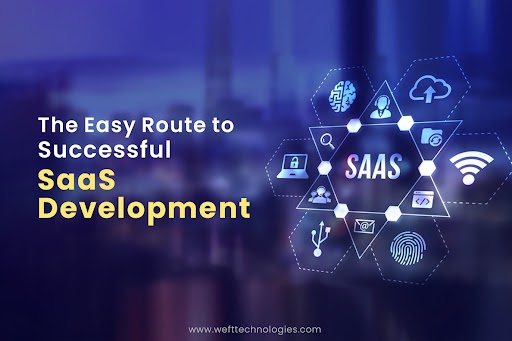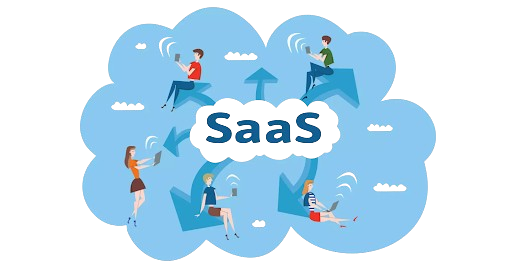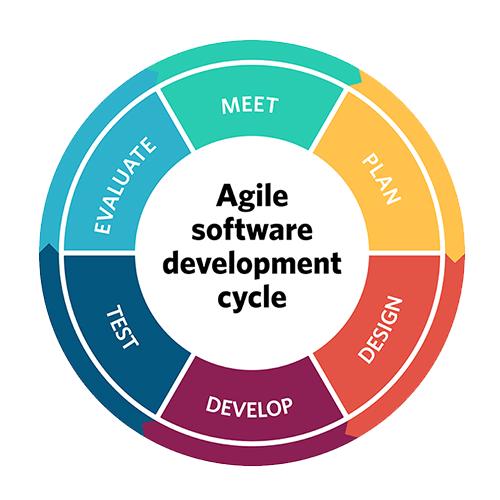
The Easy Route to Successful SaaS Development
- Lekshmi SP
- June 24, 2024
The SaaS or software-as-a-service model has become increasingly popular. Unlike traditional software, SaaS is hosted on remote servers and managed by the provider. This means businesses don’t need to handle installations or maintenance. SaaS offers flexibility, allowing users to access applications from any device with an internet connection.
But what exactly is SaaS, and why does it matter? This blog will tackle this question and walk you through each stage of the SaaS development process.

What is SaaS? Why Does It Matter?
Software as a Service, or SaaS as it is commonly called, is a method of delivering software applications over the internet. SaaS software will be hosted on remote servers and will be managed by the SaaS provider. The SaaS provider offers software as a service for multiple users. This will effectively mean that companies do not have to build or maintain software on-premise. Most of these SaaS applications work on a subscription basis, allowing you to pay for only those features that you need.
One of the key features that make SaaS an attractive option is the high flexibility and convenience it offers. Users can access it from any device with an internet connection since it is hosted on the cloud. SaaS software also offers better security as your data is kept separate and secure by the provider. The provider also handles all the software updates and maintenance, allowing you to focus on other aspects of your business. These features collectively enhance operational efficiency, security, and cost-effectiveness, making SaaS an ideal choice for modern businesses.
To break it down clearly, the following are the key features that make SaaS popular:
- Flexibility – Access applications from any device with an internet connection.
- Convenience – No on-premise installation or maintenance required.
- Security – Data is securely stored and managed by the provider.
- Scalability – Easily scale resources up or down based on business needs.
- Cost-effectiveness – Pay-as-you-go models reduce upfront costs.
- Automatic Updates – Providers handle software updates and maintenance.
- Accessibility – Globally accessible, enhancing collaboration and remote work capabilities.
- Integration – Easily integrate with other software applications and systems.
- Customization – Features and functionalities can be customized to meet specific business requirements.
- Analytics – Gain insights through built-in analytics and reporting capabilities.
- Support – Receive ongoing technical support from the SaaS provider.

10 Steps/Stages in the SaaS Development Process
Creating a SaaS product is no mean task. It involves a variety of steps and having a clear idea of what goes into making a SaaS product can be extremely useful. By following a structured process, you can build a robust, scalable, and user-friendly SaaS application. Here’s a detailed look at the process:
Ideation
The first thing you have to do is come up with an idea for your SaaS product. Brainstorm the problems and pain points of your target customers. You can even go one step further and talk to your potential customers to get feedback. Now you should identify the USP of your product and make sure that your product will give value to your customers.
Market Research
The next thing you need to do is market research. This will help you understand your target market. You can get information on user needs and preferences which will aid you in preparing detailed user personas. Market research also entails studying what your competitors are offering and finding gaps you can fill.
Roadmap
The next step is to break down your project into smaller tasks with corresponding deadlines. This roadmap should contain a comprehensive project timeline, a detailed resource plan, and a prioritized feature list.
Design
The next step in the SaaS development process is to create a visually appealing design. Keep in mind that while aesthetics is important, the interface should also be user-friendly. You can start with basic sketches of your desired interface and then move on to developing interactive prototypes. The final UI/UX design should be intuitive and reflect your brand aesthetics.
Development
Now the software has to be built. Note how there are four steps before we even reach development. The development process includes coding the user interface, developing the server-side databases, and integrating the different components. If you don’t have an in-house development team, you could outsource the development of your SaaS product to any SaaS development company specialized in the field.
Testing
Testing is an unavoidable part of this whole process. It helps ensure that your software works as intended and is free of defects. The testing process could include unit testing, integration testing, system testing, and user acceptance testing.
Deployment
Now your software is ready for deployment. Deployment simply means making your software available for use. You can start by deploying the software to a staging environment that mimics the production environment. Then you can deploy the software to the live environment.
Marketing
Surprised that there are more steps here? Developing and eventually deploying your product will not attract users to it. You have to promote it for people to get to know more about it. Simply put, you have to market your product. You have to develop a marketing strategy that effectively targets your audience and uses multiple channels to reach them. You can try SEO, social media, email marketing, and online ads for this.
Updation
One of the key features that make SaaS an attractive option for many is not having to worry about remaining updated. As the SaaS provider, you are responsible for providing regular updates to your customers. To make this easier, create a feedback loop. This will help you regularly collect feedback and improve your product based on that. You can add new features if necessary or improve product performance and scalability.
Maintenance
We already discussed updation, but maintenance is equally important. Regular maintenance ensures that your software remains functional and secure. To do this, continuously monitor your product for performance issues and downtime. Implement security patches and updates to protect against any vulnerabilities. A good SaaS development company in India will offer these maintenance services and free support to help you resolve any issues quickly and efficiently.
Investing time and effort into each of the above steps of the SaaS development process ensures that your product will meet user needs and stand out in the market. Whether you’re a startup or an established company, understanding and following these steps will help you create a successful SaaS product.

Conclusion
SaaS has revolutionized the way software is delivered and managed. It offers flexibility, convenience, and enhanced security, making it a preferred choice for many businesses. Developing a SaaS product involves a variety of steps that includes ideation, market research, creating a roadmap, design, development, testing, deployment, marketing, updation, and maintenance. By following this structured process, businesses can build successful SaaS applications that provide value and stand out in a competitive market. Whether you’re just starting or already established, understanding these stages will help you build a successful SaaS application.
